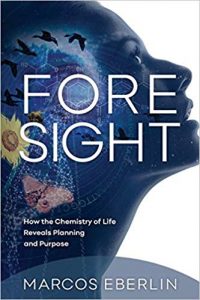Evolution’s Huge Problem with Circular Causality…aka: Causal Circularity
The Chicken-and-Egg Problem is Everywhere in Biology
We are all taught it in school: Blind evolution produced all the living forms around us, one small step at a time. What they don’t tell us: The story faces countless chicken-and-egg problems, beginning with the actual chicken and egg.
Which Came First?
A chick embryo’s development is a wonder to behold. So too is the egg in which it develops. The egg yolk and egg white contain just the right food the chick will need before it hatches. The eggshell also has microscopic pores that let air in so the chick can breathe. The developing bird then generates a network of capillaries to absorb oxygen from the air and release carbon dioxide.
Just before hatching, special membranes in the egg trap enough air so the chick can take its first breath before it leaves the shell.
The eggshell is hard enough to protect the developing chick, yet fragile enough for the full-grown chick to peck its way out. The shell and its contents are masterpieces of engineering that both nourish and protect the baby bird.
But there would be no egg without a chicken to produce it. Without an egg there can be no chicken, but without a chicken there can be no egg. How could the system have evolved one small functional step at a time? It’s an old question, one that Darwinists would like you to think they have answered satisfactorily, and long ago. They haven’t.
The chicken-and-egg problem is the archetypal example of causal circularity. To get A we need B, but to get B we first need A. We can’t have one without the other. To get both together, we need foresight — an engineer capable of planning for the future.
Membranes: An Evolutionary Wall
We find many such examples of causal circularity throughout living systems. As I explore in my latest book, living cells need to be surrounded by membranes. No membranes, no life. And not just membranes. Membranes have a myriad of phospholipids to resist pH and temperature fluctuations. They also have and channels that enable a cell to control its internal environment.
- Help us champion truth, freedom, limited government and human dignity. Support The Stream »
Those channels require complex and specialized proteins to function. Yet without a skilled biochemist, the necessary proteins are made only in cells — which existed long before there were biochemists. Without stable membranes loaded with protein-operated channels, there are no cells. But without cells there are no proteins to form membrane channels.
Information Circularity
Or consider this dilemma: Living cells contain DNA and RNA — both exquisitely suited for the jobs they perform. From the chemistry of their components to the relative stability of these complex molecules themselves. Without DNA and RNA, the cell would fail to synthesize the proteins it needs. Yet without a suite of complex proteins, the cell would fail to synthesize more DNA. It could never divide. And without another suite of complex proteins, the cell couldn’t make RNA.
No DNA and RNA, no proteins. No proteins, no DNA or RNA.
And without ribosomes, RNA messages cannot be translated into proteins. And guess what: ribosomes are made of RNAs and proteins.
After proteins have been translated by the ribosomes from RNA, chaperones help them rapidly fold into the right three-dimensional shapes. Without the right shape, a protein is useless. Actually, it’s a threat to the cell. But chaperones are made of proteins. Proteins that need chaperones to fold them into their functional shapes.
Once again, we have causal circularity. No chaperones, no properly folded proteins. No properly folded proteins, no chaperones.
We weren’t around to witness the origin of any of these biological marvels. But in all cases of causal circularity where we can trace them back to their origin, we always come to a mind. A designer with the foresight to anticipate the circularity problem and to implement a solution to a future problem.
Circles that Point
Where does all this chicken-egg circularity lead? Let’s take it in steps.
First, we see many instances of causal circularity in biology. These pose engineering challenges whose solutions require on-time delivery of multiple, essential, and well-orchestrated parts.
Second, we know from our uniform experience that the ability to anticipate and solve such problems before they happen is a unique characteristic of intelligent minds.
Third, there are no demonstrated examples of unguided, mindless processes anticipating and solving problems that require a sophisticated orchestration of fine-tuned parts, all brought together for an origin event.
Hand-waving references to cases that are assumed rather than demonstrated do not count. Neither do arguments based on question-begging logic — for example, “Common features must mean common descent” and “Common descent must mean blind evolution.”
Therefore, our uniform experience provides us with only one type of cause with the demonstrated capacity to anticipate and solve such problems — intelligent design: the best and, indeed, the only casually adequate explanation for the many examples of apparent foresight in biology.
The evidence in biology for a designer with foresight is not merely apparent. It is insistently real.
Biochemist Marcos Eberlin, a member of the Brazilian Academy of Sciences, has published over 800 scientific articles and is author of the new book Foresight: How the Chemistry of Life Reveals Planning and Purpose.

